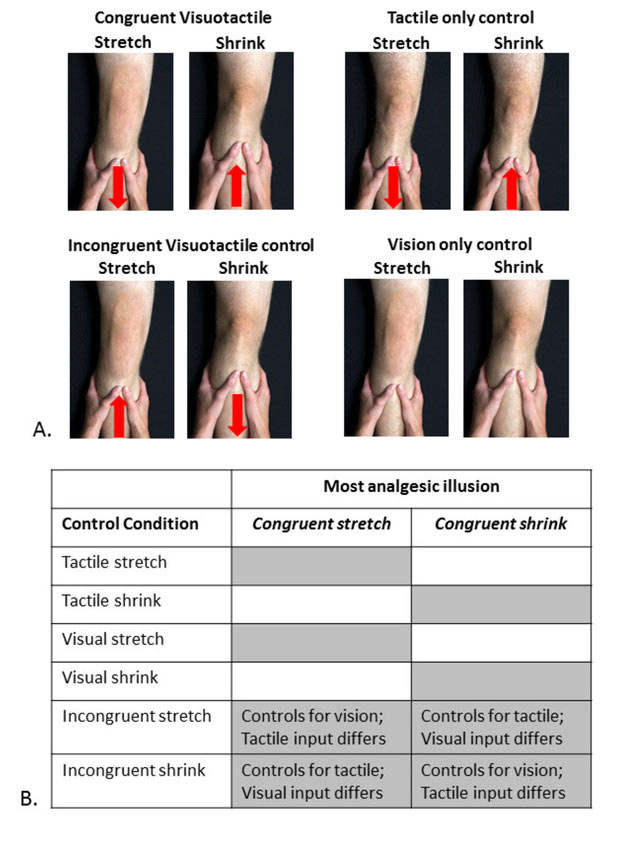
(A) The red arrow indicates the direction of tactile input provided. In the Congruent Visuotactile illusion, the tactile input directionally matched the visual manipulation (i.e., knee visually shrunk to look smaller, tactile push toward the knee to match visual input); in the Incongruent Visuotactile illusion, the tactile input did not directionally match the visual manipulation (e.g., knee visually shrunk to look smaller, tactile pull away from the knee, unmatched to visual input). Photograph credit: Anne Graham. (B) The gray shaded areas represent the control conditions for which the most analgesic congruent visuotactile illusion was compared to for analysis purposes. Figure available via Creative Commons License at https://peerj.com/articles/5206/
In a study published July 17 in the journal Peer J, researchers at the University of South Australia (UniSA) Body in Mind Research Group have found that people suffering from knee osteoarthritis (OA) reported up to a 40% reduction in pain when presented with an illusion of the knee and lower leg elongated. Further, the pain reduction was optimal when the illusion was repeated numerous times — that is, its analgesic effect was cumulative.
The research provides proof-of-concept support that visual illusions can play a powerful role in reducing pain, said Tasha Stanton, PhD, a UniSA researcher, National Health and Medical Research Council career development fellow, and study co-author.
“[B]y understanding the neurological processes at work, we may be able to ease pain more effectively for people with chronic conditions, reduce their reliance on medications, and find alternative physical therapies to help manage conditions like osteoarthritis,” Stanton said. “This research adds to a growing body of evidence that the pain experienced in osteoarthritis is not just about damage to the joint.
There are other factors at play and the more we understand about these natural mechanisms for reducing pain and how they are triggered, the more opportunity we have to develop a range of treatments to manage chronic conditions.”
Stanton TR, Gilpin HR, Edwards L, Moseley GL, Newport R. Illusory resizing of the painful knee is analgesic in symptomatic knee osteoarthritis. PeerJ, 2018; 6: e5206 DOI: 10.7717/peerj.5206.








